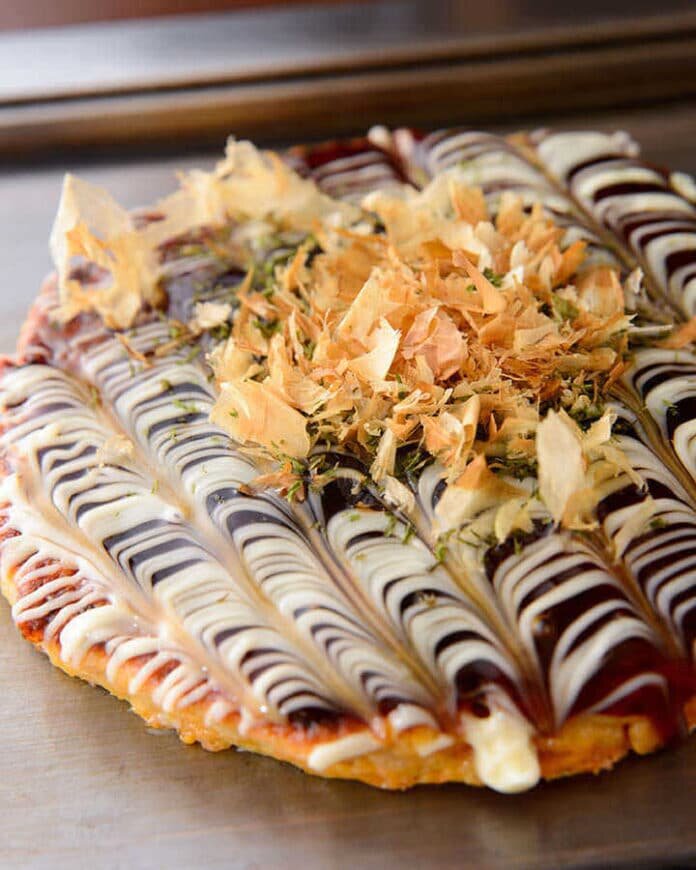
Okonomiyaki is one of Osaka’s most famous dishes, which is a savoury style pancake usually consisting of flour, eggs, cabbage, pork belly and a selection of various toppings. However, as you travel throughout Japan, you will find that each region has a different style of okonomiyaki. easy okonomiyaki recipe
Table of Contents
History of Okonomiyaki
Okonomiyaki can be separated into two words: Okonomi meaning ‘how you like it’ and yaki meaning ‘fried’. Where the now famous Osaka dish originated from dates back to a man called San no Rikyu in the 16th century. He was a master of the Japanese Tea Ceremony, in which he used to serve fu-no yaki, a cake/pancake of sorts. These were served with a miso and pepper paste sandwiched in between. This then evolved as different regions started to develop the cake by filling them with various ingredients.
Within Osaka, Yoshokuyaki was a savoury pancake using spring onions and later on, seafood. People started to add their own ingredients and it soon gained the name, okonomiyaki. It then gained further popularity during the Second World War, as rice became a scarce ingredient. Following the war, more luxurious ingredients were added such as pork and eggs.
Different styles of Okonomiyaki
Osaka
Osaka style okonomiyaki’s bas is cabbage so the cutting of the cabbage is very important. The ideal size is about 3cm long and about 0.5cm thick. This is so that the cabbage retains so of it’s crunch and doesn’t go soggy. It helps balance the doughtiness texture from the batter and doesn’t become too monotonous for your palate. The cabbage is mixed with the batter and fried together on a hot plate (teppanyaki).
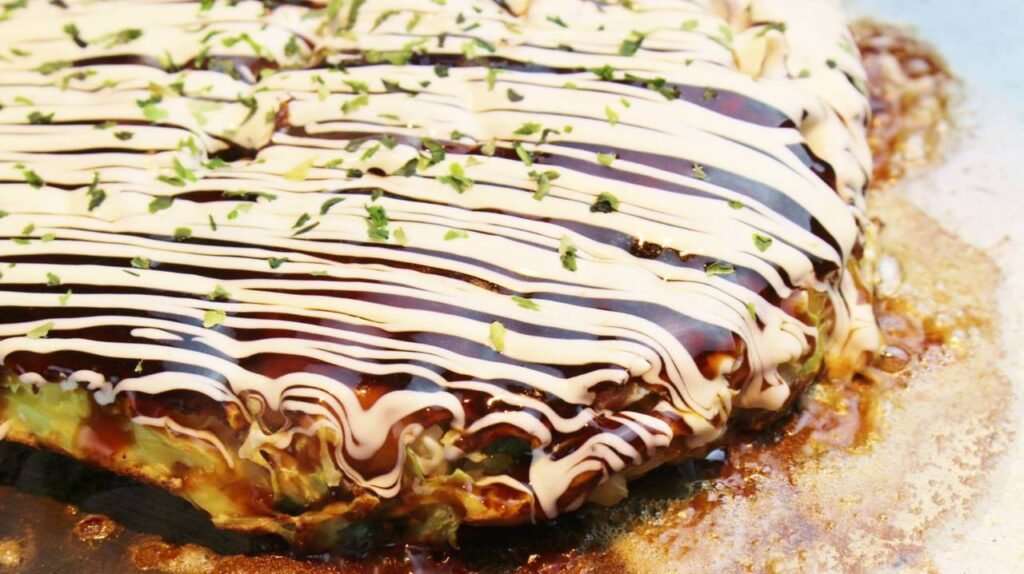
Hiroshima
There are two main differences between Osaka and Hiroshima style okonomiyaki: Noddles and frying in layers. When cooking, the batter is fried into a thin pancake and the filling is cooked separately. Once cooked, the filling is placed on top of the pancake and then on top of yaki soba noodles.

Monjayaki
Monjayaki is similar to okonomiyaki and is popular within Tokyo. The ingredients are chopped a lot finer and the batter contains a lot more water. It becomes a lot more cohesive and although it has the same taste of okonomiyaki, it is a bit runnier in texture. Monjayaki was usually a snack, offered for very cheap as it is simple to make. School kids would often eat it due to its cheapness.
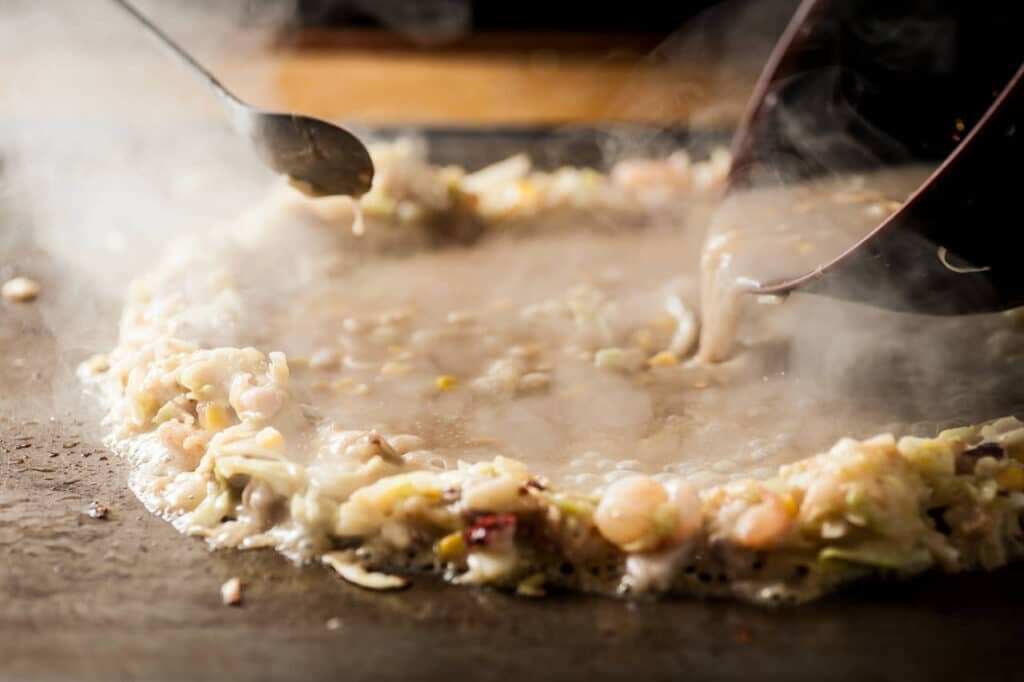
Hashimaki
Hashimaki is the same as Okonomiyaki in flavour, however it is rolled around a pair of chopsticks. The name derives from the Japanese word ‘Hashi’ meaning chopsticks. The batter is fried first and then the filling is added on top and then finally another ladle of batter. Chopsticks are placed in the middle and then the okonomiyaki is rolled. This can be found at local festivals and is often served at school events.
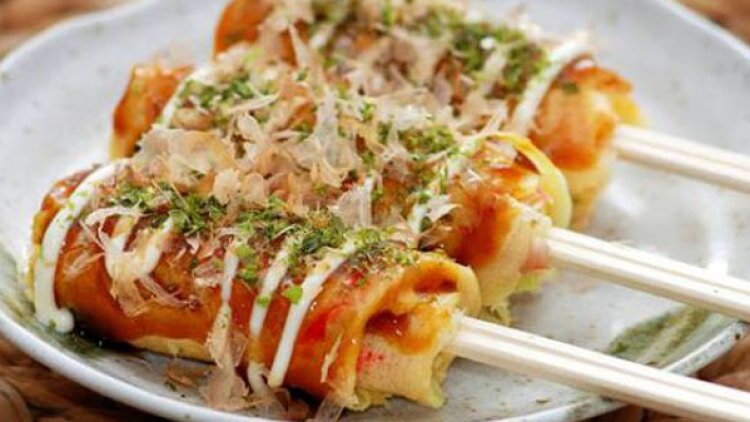
Tonpeiyaki
Tonpeiyaki has the same ingredients as a traditional okonomiyaki but without the batter. A literal translation is ‘flat grilled pork’. Pork and leek is fried and then rolled into an omelette. It is sort of a hybrid between an omelette and okonomiyaki!
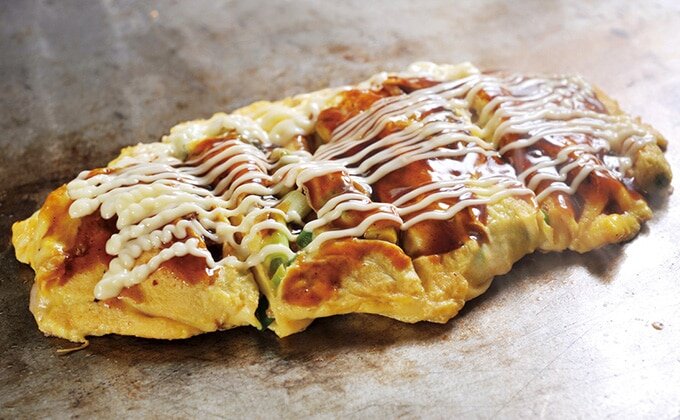
Kobe Style Okonomiyaki
Close to Osaka is Kobe, which has its own unique style of using slow cooked beef tendons and konnyaku. Konnyaku is made from konjac potatoes, which are finely sliced, dried then ground into a powder. This is then mixed with water to make the jelly like konnyaku. It contains very little calories and offers a unique texture to the okonomiyaki.
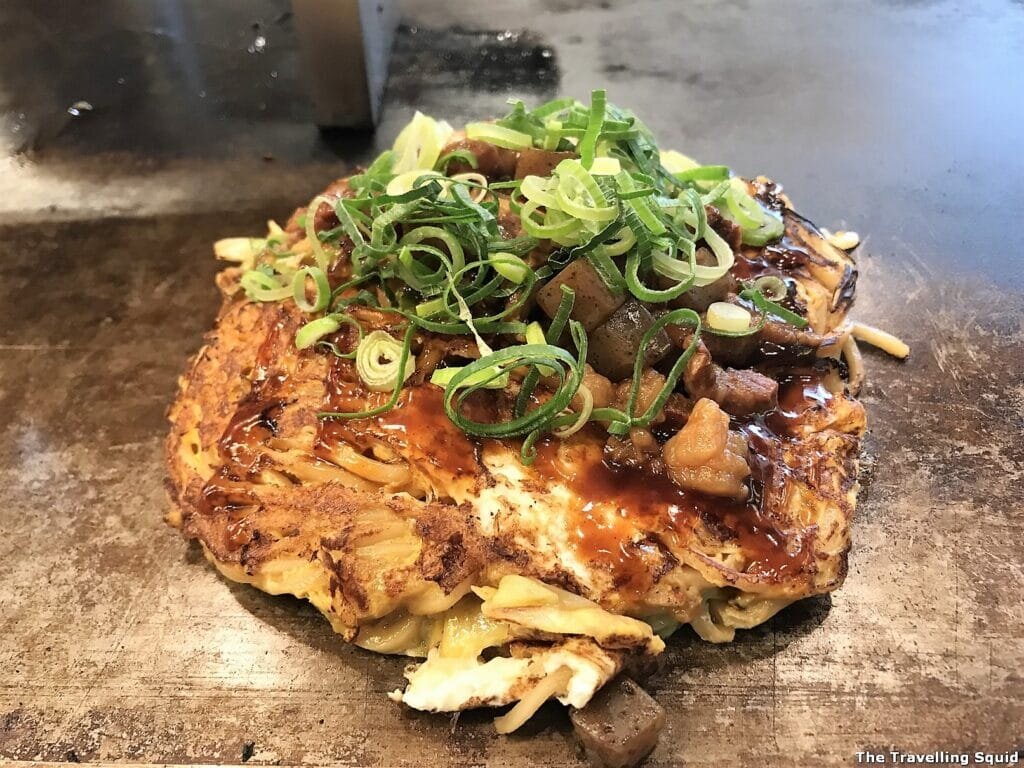
The beautiful thing about okonomiyaki is that once you have the base, you can literally put anything you like. Kimchi, spicy fermented cabbage, is particularly popular, adding a subtle spicy flavour throughout the dish. Further more, cheese can be added, which balances perfectly with the heat and crunch from the kimchi. Although kimchi and cheese is a Korean food combination, it has started to spread throughout Japan. However, cheese is often added on top of okonomiyaki to westernise it, resembling a pizza. Wherever you travel throughout Japan, those areas will use their specialised ingredients within okonomiyaki so the options are limitless. Don’t be afraid to experiment at home!
Secrets of Okonomiyaki
- Japanese Long Yam (Nagaimo)
If you look online for recipes, you will find very generic methods, flour, eggs, cabbage and pork. However, within Osaka, they actually use Japanese long yam, or nagaimo (長芋) in Japanese. They peel and grate the yam and then they mix it with the batter. When raw, nagaimo is extremely slimy and sticky but once it is cooked, it helps give the okonomiyaki a delicious light texture, making it easier to eat. Compared to just flour and eggs, the okonomiyaki with yam will help balance the heaviness of the cabbage, meat and batter. You can find nagaimo in most Asian supermarkets. It is not essential but if you want to try the authentic recipe used in Osaka, nagaimo is a must ingredient. easy okonomiyaki recipe
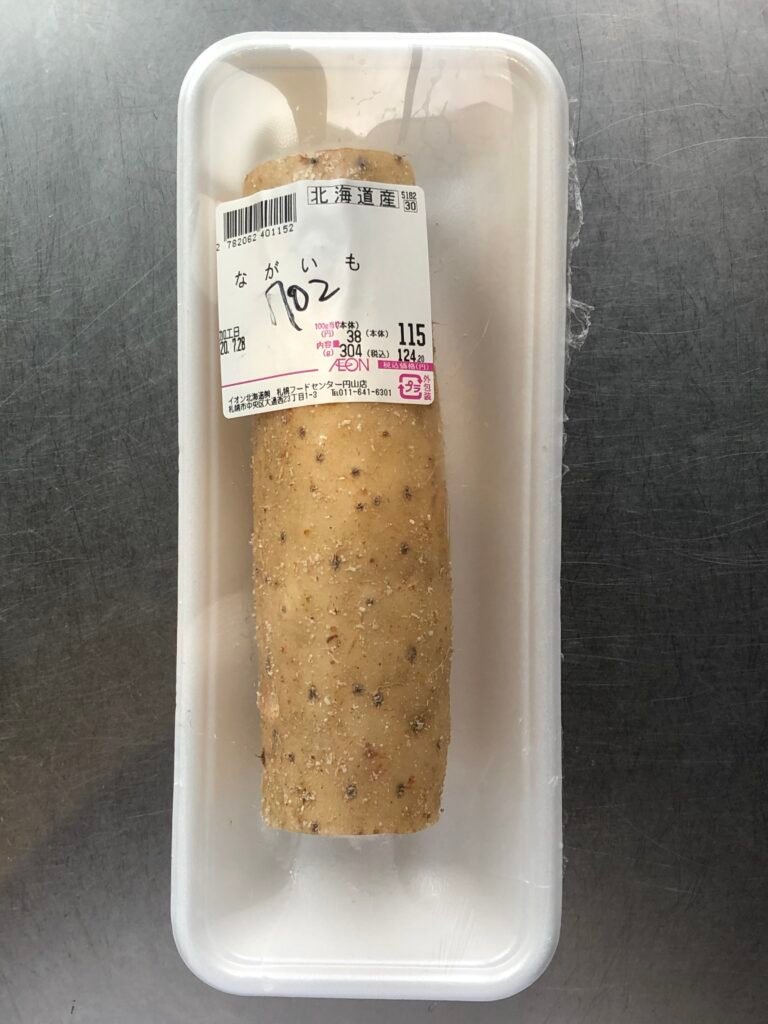
- Dashi
Most okonomiyaki recipes call for water to mix the flour and eggs to for the batter. While it is suitable to form the pancake batter, it adds no flavor. Dashi is one of the staple ingredients of Japanese cuisine and is a stock comprised of dried kelp (kombu) and katsuobushi (dried bonito flakes). There are more variations but for the most part, these two are the backbone of dashi stock. This will give an umami depth of flavor that will not be achievable by using just water.
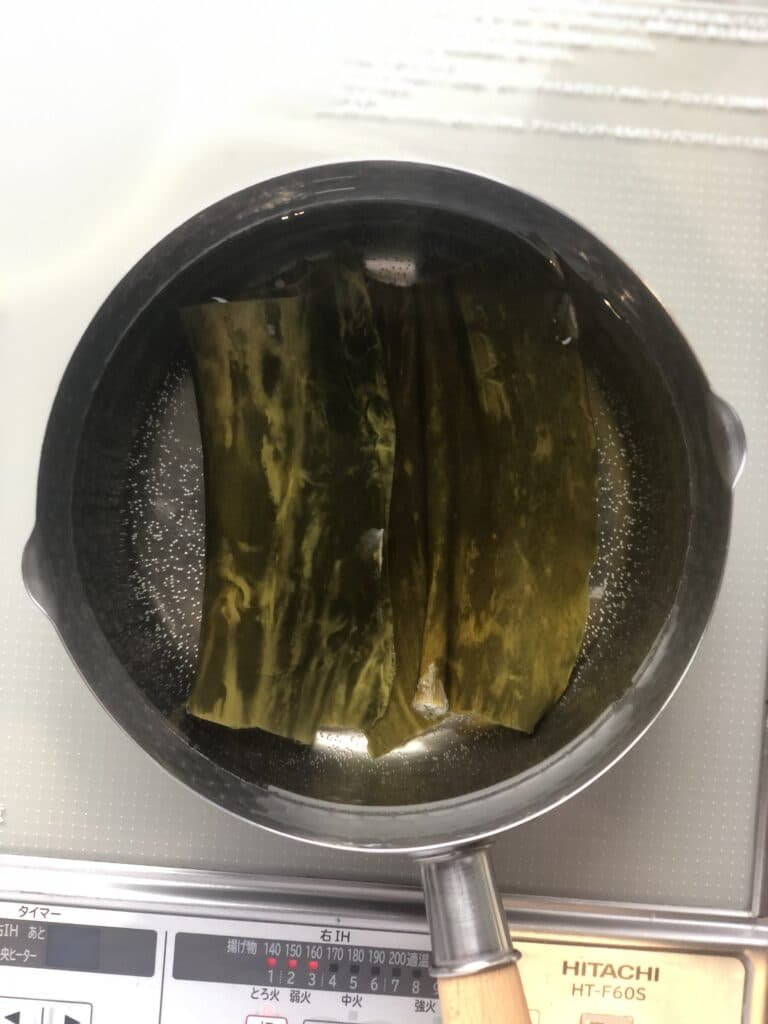
Easy Okonomiyaki recipe
Ingredients
- 200g flour
- 200g dashi
- 6cm Nagaimo – grated
- 3 eggs
- 1/4 cabbage head
- Favored fillings (pork, seafood etc.)
- Pinch of salt
1. Cut the cabbage 3cm long and thinly slice, roughly 0.3cm thick.
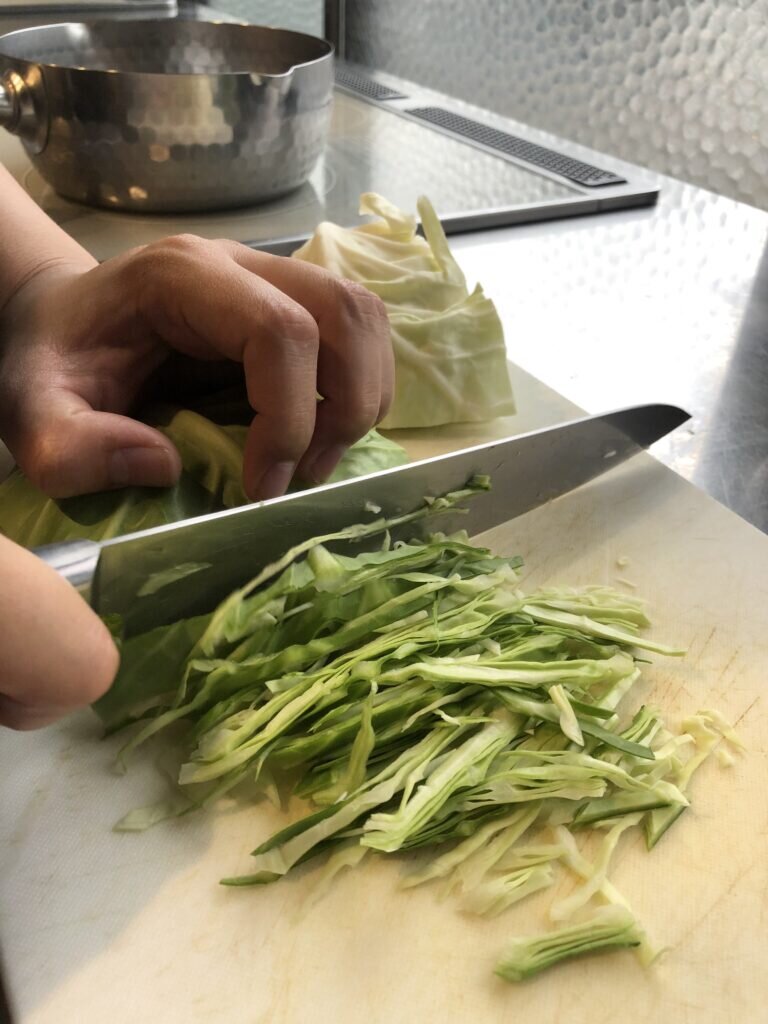
2. Mix the flour into the bowl and then the dashi and egg.
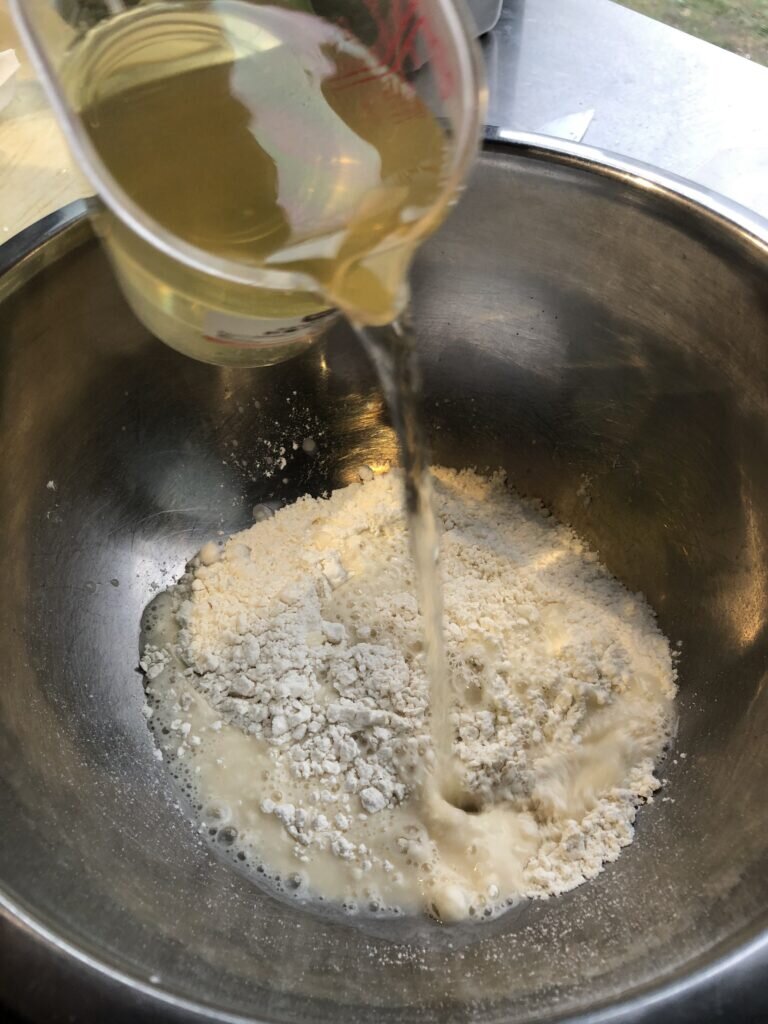
3. Peel and grate the nagaimo. It is quite slimy so I would recommend peeling just the bottom half of the naigaimo so you can get a good grip from the skin. If not possible, try using a kitchen glove or paper towel.
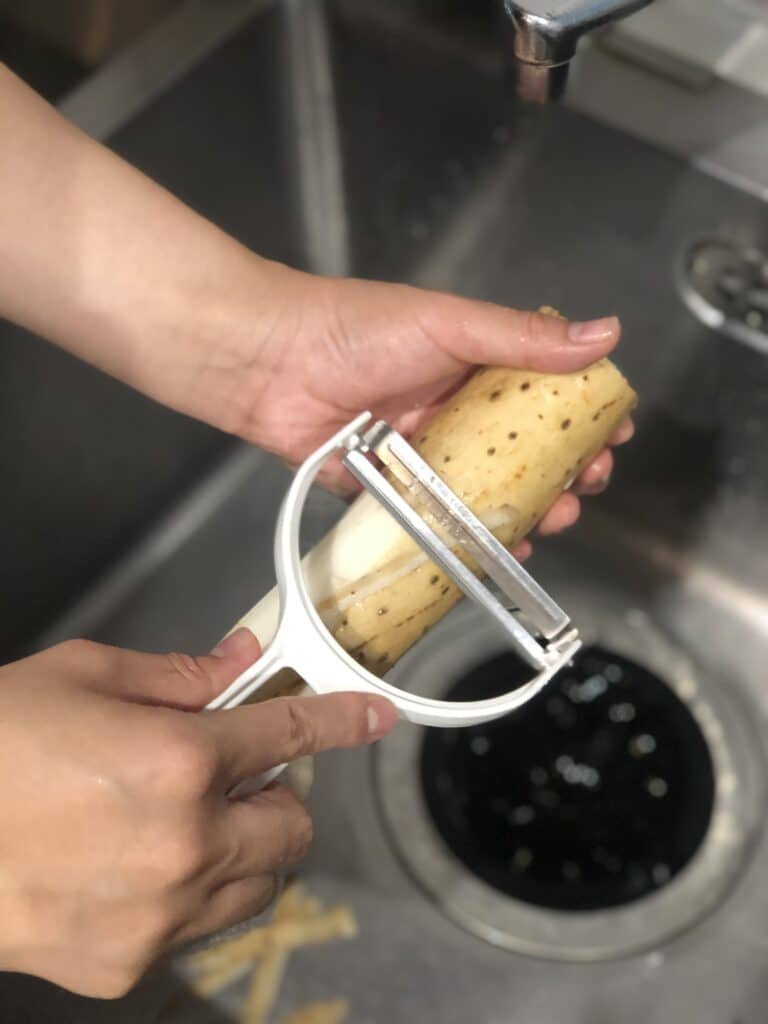
4. Add the nagaimo and cabbage into the flour mix.
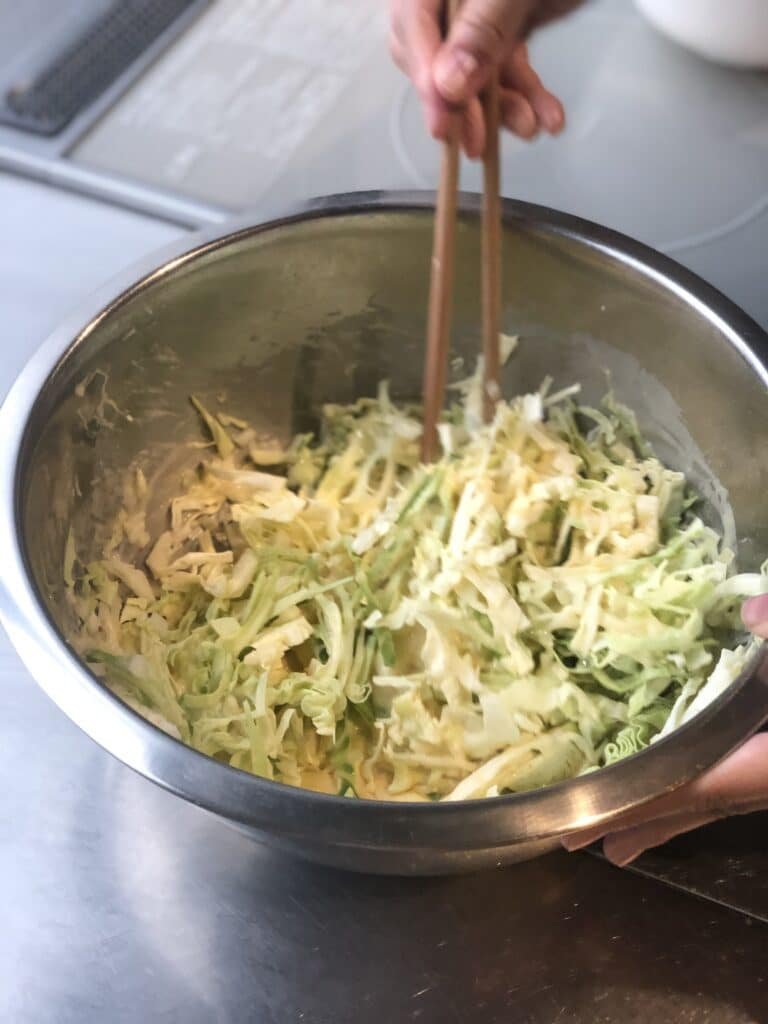
5. Heat your fry pan or hot plate on medium heat, approximately 170 degrees celsius, and then add some vegetable oil. (Canola oil is okay as well!)

6. Add around 2 ladles of dough to the fry pan.
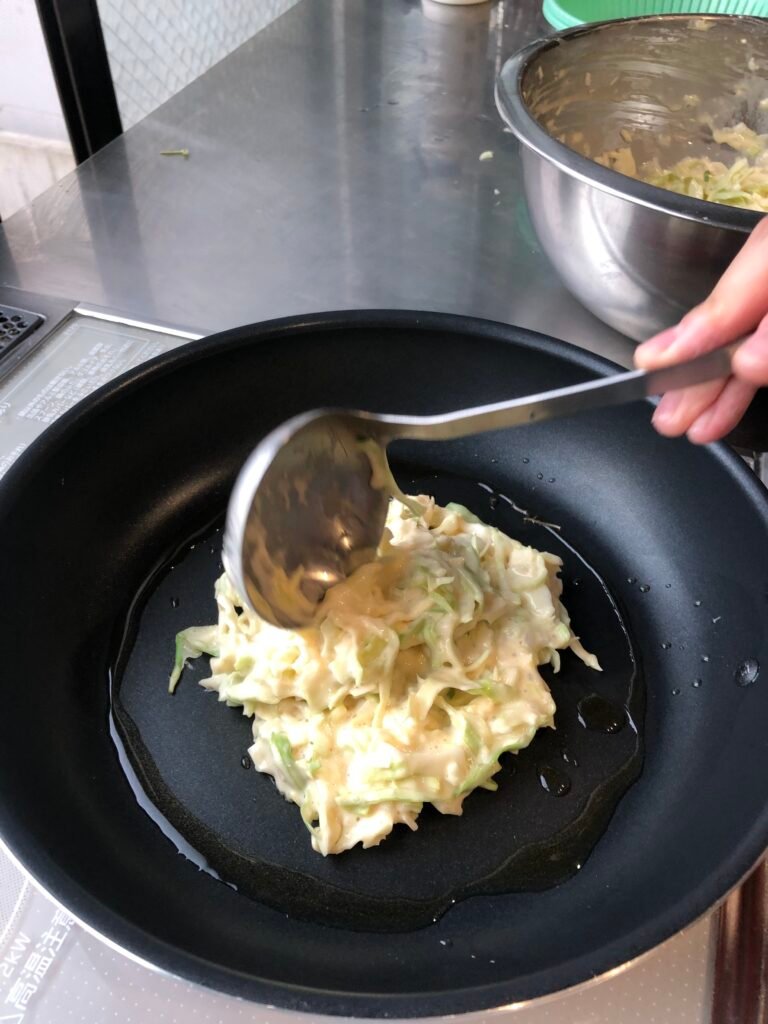
7. Place your favored ingredients on top (pork, prawns, squid, anything is okay! Do not press down.) This time I went for squid, prawns and some kimchi!
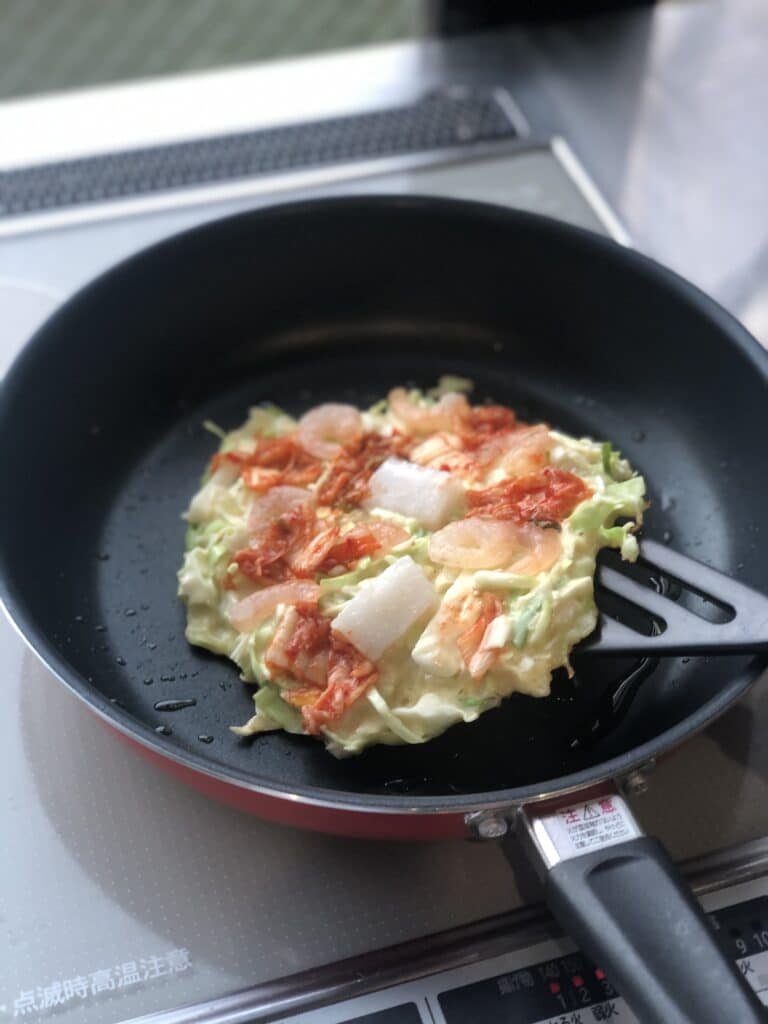
8. After the bottom is golden brown, flip over. By this time, your topped ingredients should be merged with the batter so it is easy to flip over.
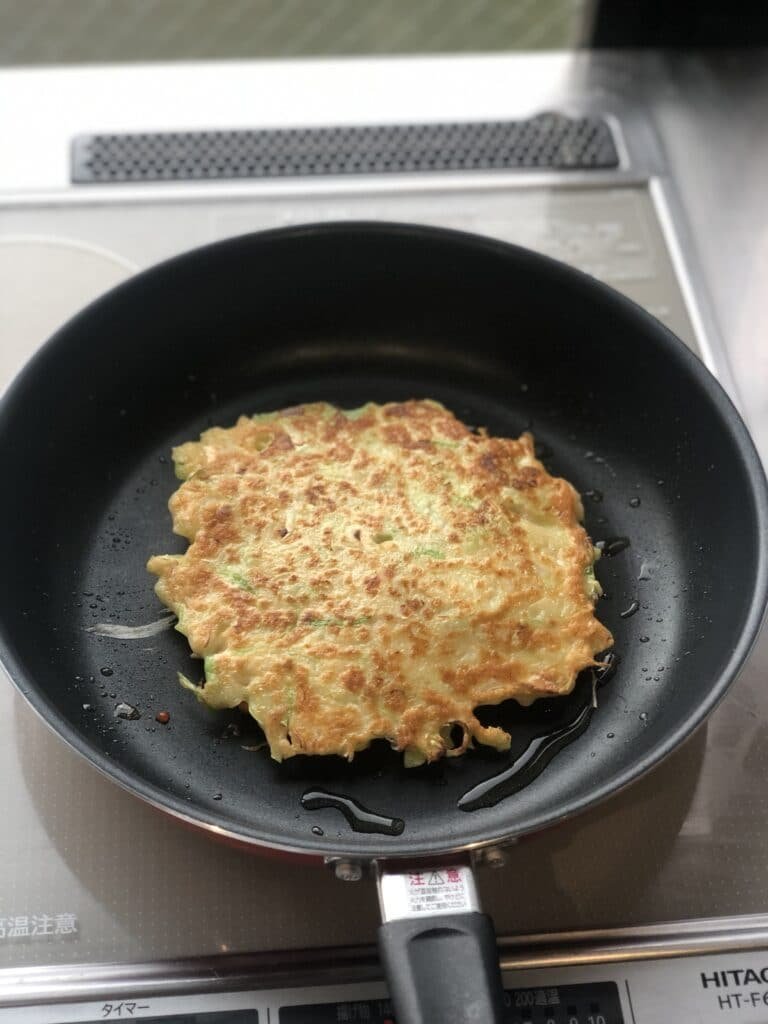
9. Wait till the flipped side is golden brown and then you can serve on a plate or just in the fry pan or hot plate to keep warm.
10. For the sauce, the ordering is very important. First, the okonomi sauce is added. Then the mayonnaise in a zigzag pattern. The nori is added and then the katsuoboshi. (I didn:t have any nori so I went for some shiso instead.
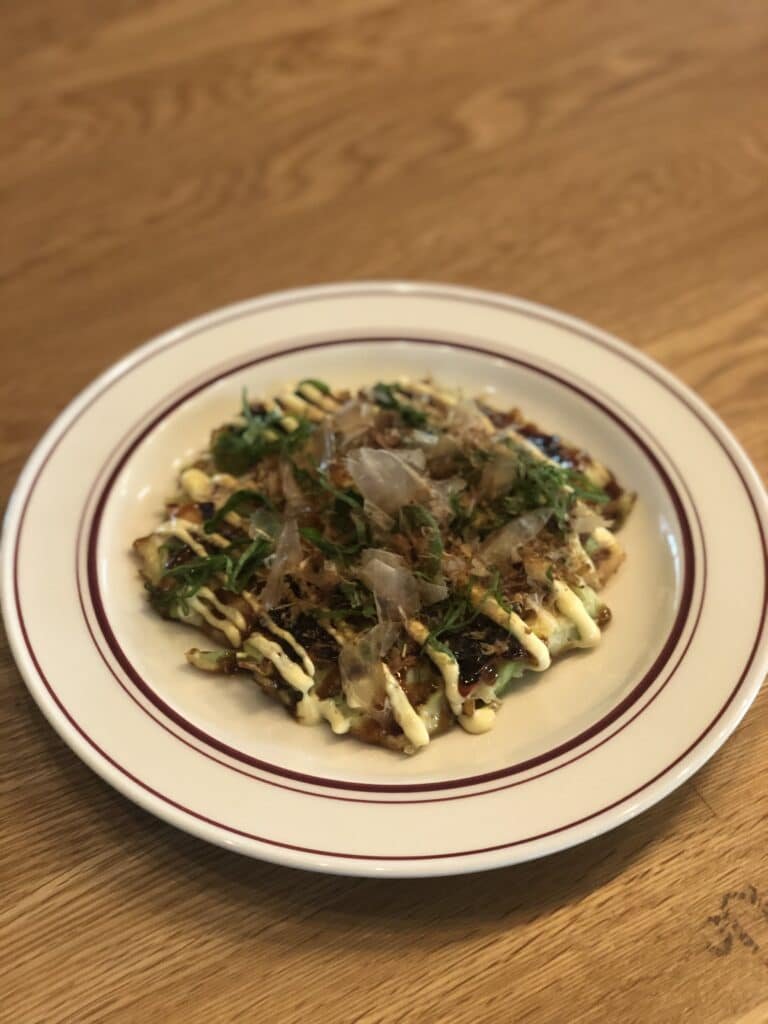
11. Enjoy!
Easy Okonomiyaki recipe – Toppings
The toppings of an okonomiyaki are vital in creating the taste that everyone knows and loves. easy okonomiyaki recipe
1. Okonomi Sauce
Okonomi Sauce is sweet and has a strong umami flavour, making it one of the most important toppings. It is similar to Worcestershire sauce but is less salty and instead sweeter. One of the most famous brands of okonomi sauce is ‘Otafuku Okonomi Sauce’ and can be found in most Asian supermarkets. However, if you want to make your own, you can use ketchup, Worcestershire sauce, oyster sauce and sugar. easy okonomiyaki recipe
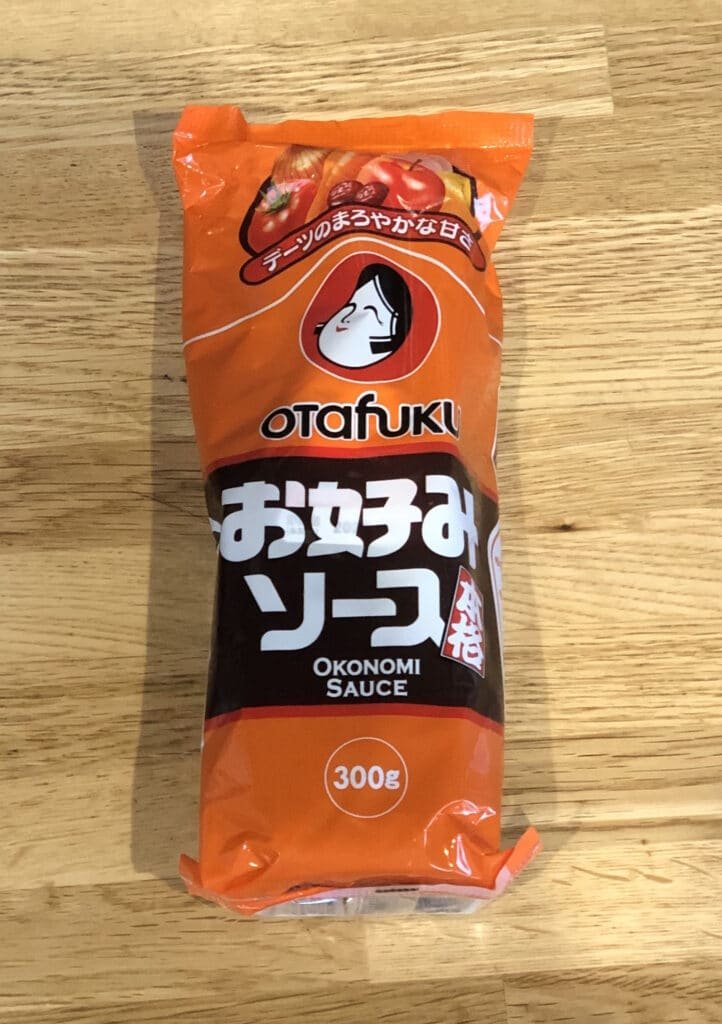
2. Kewpie Mayonnaise
Japan’s most famous mayonnaise, made by kewpie, isn’t like your normal mayonnaise. One of the main differences is the use of egg yolks instead of whole eggs contributing in a richy and creamy mayo. The use of rice vinegar gives a punchier kick and the final sprinkle of MSG adds the extra umami flavour. This mayonnaise creates a fantastic balance between the sweet and umami packed okonomi sauce and the creamy mayonnaise. Futhermore, it has a small nozzle to squirt through, which gives the okonomiyaki its distinct zigzag appearance. easy okonomiyaki recipe
3. Dried Seaweed (nori)
There are different types of seaweed but the one used for okonomiyaki is called Nori in Japanese. Nori kind of acts like a herb, with it being sprinkled on top of the okonomiyaki. The unique aroma and fragrance ontop of the umami punch it offers, is a vital topping. easy okonomiyaki recipe
4. Katsuboshi
Katsuboshi is the final topping. Katsuboshi is fermented and dried bonito fish, which has been shaven into flakes, offering a deep but subtle taste of fish. It also adds the final umami punch as well as complementing the dashi inside the okonomiyaki. The katsuboshi has to be added last because as it hits the steam from the okonomoiyaki, the bonito flakes start to move as if they were dancing! Not only does it offer a theatrical display but also wets the appetite, showing a freshly made, hot okonomiyaki.
5. Others
Toppings are limitless so feel free to experiment with anything that suits your fancy. Some of my favourite ones are spring onions, shiso and pickled red ginger. Spring onions and pickled red ginger (‘beni shouga’ in Japanese) offer a nice crunch and freshness helping to cut through some of the heaviness of the batter. Shiso is a Japanese herb, which has a unique flavour, with tones of basil, mint and star anise. It’s aroma and brightness is a nice contrast to the meatiness from the pork (or your selection of meat).
Recommended restaurants
At most restaurants, you can choose which type of okonomiyaki you would like, with various ingredients. You will then be able to cook it yourself with a hot plate in the middle of your table. A step-by-step guide is available so you can follow as you go through. Although it’s quite hard at first to get the picture perfect okonomiyaki, it is great entertainment for dates and dinner with friends or family. At some higher end restaurants (Teppanyaki restaurants) you may be seated in front of the chef who controls the hot plate. easy okonomiyaki recipe
Fuugetsu
Fuugetsu is a chain restaurant, which can be found all over Japan. It is a standard restaurant and offers a standard okonomiyaki but done very well. The staff cooks your okonomiyaki for you in their kitchen and as such, you can guarantee it will be done with the proper methodology and preparation so it is less hassle.
Address: 2-2-3, Namba, Chuo-ku, Osaka-shi, Osaka, 542-0076
Telephone: 06-6214-5215
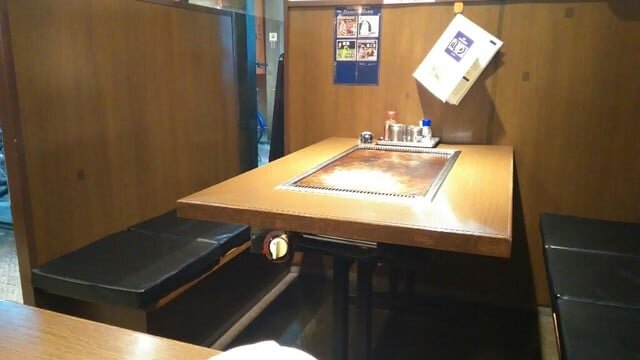
Kyo Chabana
Kyo Chabana is another chain, however a bit on the higher end. Here you can watch the chefs cook in front of you as they gracefully control their hotplate. They have a lot of different styles of okonomiyaki combining some western ingredients with Japanese. There are tomato, avocado and cheese style so here is a great place to try something out of the ordinary.
Address: 8-7 Sumidacho Kita-Ku Hankyu Umeda Main Store 12F, Osaka 530-0017 Osaka Prefecture
Telephone: 06-6313-1505
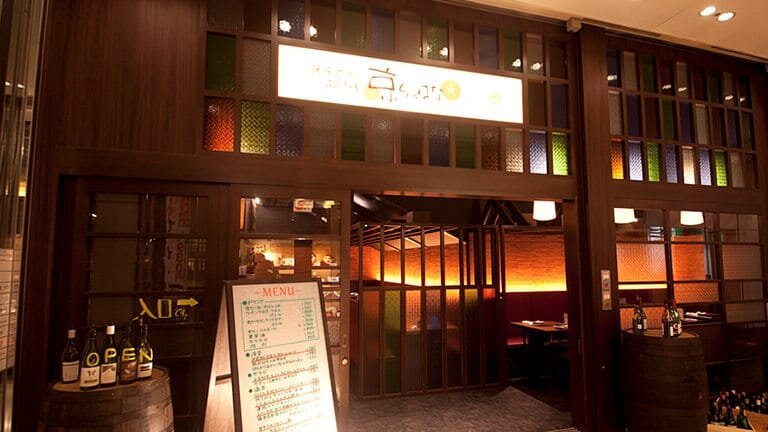
A La Dandy
Located in Fukushima, Osaka, A La Dandy and is a bit of a secret place that not many people know about, even locals. There are two different seats, one in front of the chef’s hot plate and another with a hot plate at your table. You can either watch the chef cook your meal or the okonomiyaki will be cooked and the deliver to your table’s hotplate, ready to be cut. Unfortunately you cannot cook your own but the taste is fantastic. They offer course meals as well as some unique dishes such as their okonomiyaki omelet. The typical ingredients of dish are wrapped in the dough and eggs to form a Japanese omelet (tamagoyaki).
Address: 2-chōme-3-15 Fukushima, Fukushima-ku, Osaka, 553-0003
Telephone: 050-5590-0317
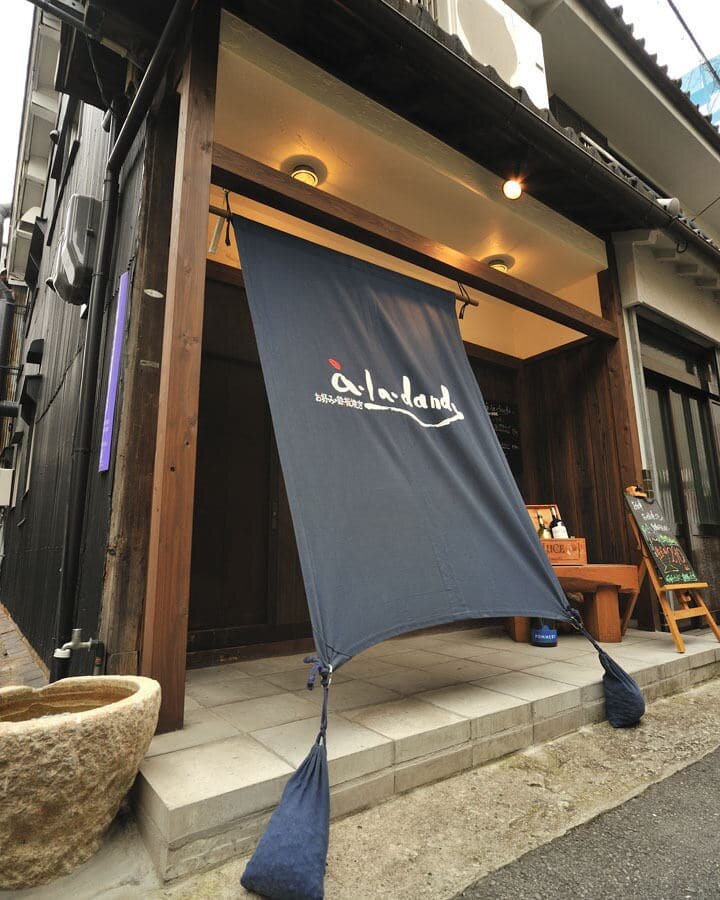
Other
One of my favourite places to enjoy okonomiyaki is at local festivals. Japan has hundreds of festivals throughout the year, scattered throughout the country. At these events, food stalls sell everything from fried chicken to okonomiyaki. It may not be the best quality in the world but the whole atmosphere and occasion of the festival is the perfect setting to enjoy okonomiyaki. easy okonomiyaki recipe
Final
Okonomiyaki is a great dish for any occasion: to make at home, to eat with friends or family or even for dates. It is versatile, you can add anything you want and is a great way to use leftovers as well. Making at home is fun but if you don’t have a hot plate, it is quite difficult to replicate the restaurant style flavour. There’s something about a hot plate, which adds a unique flavour! I would highly recommend trying to make it at home and then at a restaurant! Okonomiyaki is a real soul food, which will always warm your heart. easy okonomiyaki recipe




















